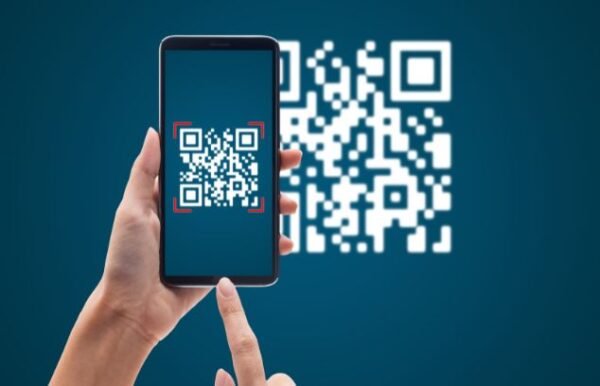Introduction
QR codes (Quick Response codes) have become an integral part of our daily lives, offering a seamless bridge between the physical and digital worlds. From scanning menus at restaurants to making contactless payments, these square-shaped barcodes provide quick access to information with a simple scan. However, as their usage has surged, so have concerns about security and privacy. Understanding how QR codes work, their benefits, and potential risks is essential for safe and effective use.
What Is a QR Code?
A QR code is a two-dimensional barcode that stores data in a matrix of black squares on a white background. Developed in 1994 by Masahiro Hara of Denso Wave, QR codes were initially used to track automotive parts during manufacturing. Unlike traditional barcodes that hold information horizontally, QR codes store data both horizontally and vertically, allowing them to contain significantly more information. They can encode various types of data, including URLs, contact information, and text, making them versatile tools for businesses and consumers alike.
Benefits of QR Codes
1. Convenience and Speed
QR codes enable instant access to information without the need to type URLs or search manually. This efficiency is particularly beneficial in retail, hospitality, and event management sectors.
2. Contactless Interactions
In the wake of the COVID-19 pandemic, QR codes have facilitated touch-free experiences, such as digital menus in restaurants and contactless payments, enhancing hygiene and safety.
3. Versatility Across Industries
Beyond marketing, QR codes are employed in logistics for tracking shipments, in education for providing additional resources, and in tourism for offering interactive experiences at historical sites.
4. Cost-Effective Marketing Tool
Businesses can use QR codes to direct customers to promotional offers, product information, or feedback forms, reducing the need for printed materials and enabling real-time updates.
5. Enhanced Data Collection
Dynamic QR codes allow businesses to track scanning metrics, such as location and time, providing valuable insights into consumer behavior and campaign effectiveness.
Security Risks Associated with QR Codes
While QR codes offer numerous advantages, they also present potential security threats:
1. Phishing Attacks (Quishing)
Cybercriminals can create malicious QR codes that direct users to fraudulent websites designed to steal personal information, a tactic known as “quishing.” These fake codes can be placed over legitimate ones in public places, deceiving unsuspecting users.
2. Malware Distribution
Scanning a compromised QR code can lead to the automatic download of malware onto a device, potentially granting hackers access to sensitive data.
3. Financial Fraud
In some cases, scammers replace genuine payment QR codes with their own, redirecting funds to unauthorized accounts. Incidents have been reported where individuals lost significant amounts due to such fraudulent activities.
4. Data Theft
Some QR codes can collect information about the device used to scan them, including location and device type, raising privacy concerns.
Best Practices for Safe QR Code Usage
To mitigate the risks associated with QR codes, consider the following precautions:
- Verify the Source: Only scan QR codes from trusted sources. Be cautious of codes found in unsolicited emails, messages, or unfamiliar public places.
- Preview URLs: Use QR scanner apps that allow you to preview the URL before opening it, helping you avoid malicious sites.
- Avoid Entering Sensitive Information: Be wary of QR codes that prompt you to enter personal or financial details. When in doubt, navigate to the website manually.
- Keep Devices Updated: Regularly update your device’s operating system and security software to protect against vulnerabilities.
- Educate Yourself and Others: Stay informed about common QR code scams and share this knowledge to help others stay safe.
Conclusion
QR codes have revolutionized the way we access information, offering unparalleled convenience across various sectors. However, their widespread adoption has also opened doors for cyber threats. By understanding the potential risks and implementing best practices, users can enjoy the benefits of QR codes while safeguarding their personal information. As technology continues to evolve, staying informed and vigilant remains crucial in navigating the digital landscape securely.
Frequently Asked Questions (FAQs)
Q1: What exactly is a QR code?
A QR code is a two-dimensional barcode that stores data, such as URLs or contact information, which can be accessed by scanning the code with a smartphone or QR scanner.
Q2: How do I scan a QR code safely?
Use your smartphone’s built-in camera or a reputable QR scanner app to scan the code. Ensure the code is from a trusted source and preview the URL before opening it.
Q3: Can QR codes be used to steal personal information?
Yes, malicious QR codes can direct users to phishing websites designed to collect personal data. Always verify the source before scanning.
Q4: Are QR codes safe for making payments?
While QR codes are commonly used for payments, ensure you’re scanning a legitimate code from a trusted vendor to avoid fraud.
Q5: What should I do if I suspect a QR code is malicious?
Avoid scanning the code. If you’ve already scanned it, do not enter any personal information and run a security scan on your device.





